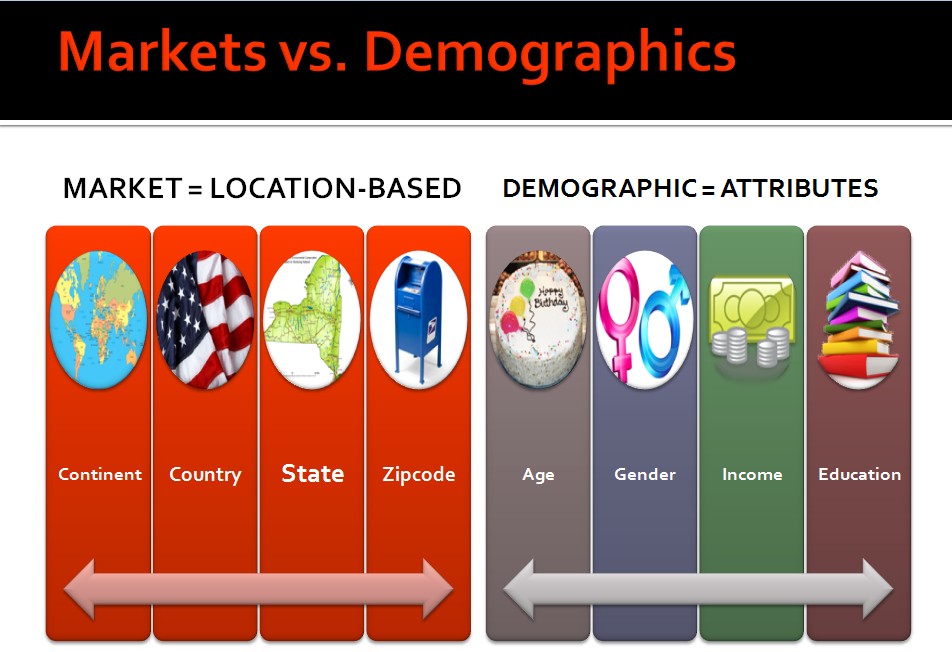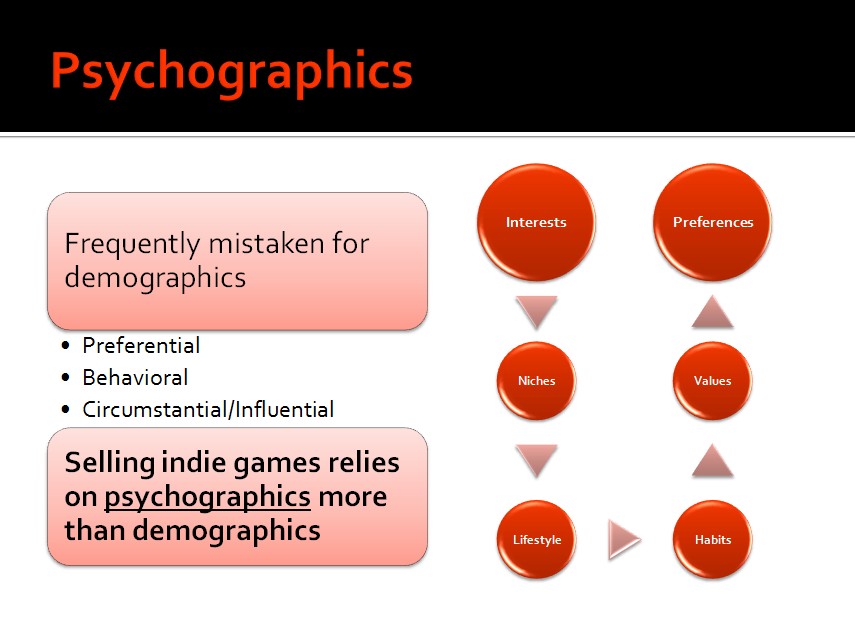Trending
Opinion: How will Project 2025 impact game developers?
The Heritage Foundation's manifesto for the possible next administration could do great harm to many, including large portions of the game development community.
The rule of seven is one of the oldest marketing adages that is still relevant today: how can game developers use it? How can indie developers figure out who they are marketing to, then get seen by them at least seven times?

I've had all sorts of interesting clients over the past few years, ranging from fellow indie developers to other industries like publishing, e-commerce, product design, jewelry, and more since I've done a lot of content marketing, business planning, and crowdfunding advisory in addition to working with game developers.
Ergo, I can honestly say that I've learned something from every client I've had. The founder of EM13 is a client of mine who has been in marketing for a very long time. He taught me about "the rule of seven": that in order for people to really remember you and your brand, it must be seen at least seven times before you get a sale.
The rule of seven isn't gospel as many people just don't buy anything no matter how often they see the brand, and others can snap your game up the second they hear about it. No less, the rule of seven is one of the oldest and most reliable marketing principles that's persisted throughout time. It can be applied to a game, your services, or virtually anything else. It can be utilized to both get your studio's name out there or help with positioning if you're looking to sell services.

Tutorials Point has a concise write-up about the rule of seven, driving home the point that regardless of what your outreach efforts are, they need to be repetitive. Take note of #2 and #4 on that list: don't think about games in terms of being non-essentials, but rather if it's the kind of game people think needs to be made either because it's a socially-conscious game that gets an important message across, it continues a beloved franchise everyone thought was dead, or perhaps it's an innovative merging of genres that hasn't been seen before. Of course, those aren't the only reasons people perceive a game needing to be made, but they're reasons that drive people to get excited for your release date. Then if you're not known, you need the rule of seven to help fix that.
The rule of seven invokes that you're seen often enough to the point that people remember you.
Marketing terms frequently get confused, so I went over them in my Selling Your Game: Marketing to Analytics class at Playcrafting. To really get the rule of seven, you should know these building blocks.
While people use terms like "market" and "demographic" in everyday business conversations interchangeably, they actually mean different things. In the absolute simplest terms, a market is a location. It can be a whole country, a state, a region of countries or states, or narrowed down to just one zip code. A demographic is based on a characteristic that is fairly black-and-white to define: your age and education level for instance. You are either a certain age or you are not, and you attained or didn't attain a certain education level. Gender identity and family status are also demographics, along with residency (not everyone's a native or permanent resident to the market they live in.) So, demographics are relatively simple.

Demographics and markets can change, of course: income fluctuates, we all get older, you may become more educated, have children, and so on.
Depending on the subject matter and gameplay for your game, demographics might not be a priority for you but how people in other cultures interpret your work could be, like if your game is pretty socially-conscious and tells a story that people of a certain group will relate to that others will not. Then if your game places more emphasis on the mechanics than the subject matter, you're likely to rely more heavily on psychographics: the habits, behaviors, interests, circumstances, lifestyles, preferences, and so forth that drive peoples' decision-making.
Indie developers definitely rely on psychographics more than demographics and markets, given that we generally lack the market sampling resources that larger studios have access to and are also not pushing our games out onto a general market.

Looking at my studio's mailing list, you can say a majority of our subscribers like point-and-click adventure games and that's their preference. But we've also gotten subscribers because they like RPGs, and Mage's Initiation has characteristics of both genres. Just because our fans like one or both of these genres doesn't preclude them from wanting to play games in other genres, whether we or other developers make them.
As an indie developer, one could also conclude that our fans prefer to support indie developers rather than buy AAA games. But that's also hard to define because some of our fans' values may dictate to only support indie developers while others will buy whatever game they please.
Ergo, psychographics are definitely not as easily-defined as markets and demographics where those are pretty black-and-white.
Psychographics can still intersect with markets and demographics. Operating systems are a preference to a lot of people while others don't really care. Either way, mobile developers seeking expansion to other territories would be interested to know that according to Mobiforge, Eastern European countries have a preference for Android while iOS is more popular in Australia, the UK, and Canada (with the US about half and half, skewing towards iOS.) Android users also tend to have different demography than iOS users and when it comes to the actual devices, there's countless Android devices but few for iOS. These are important considerations when figuring out how to appeal to who is most likely to play your game.
Because indie developers tend to have less means to analyze who's buying their games aside from Google Analytics or sales data from Steam and other distributors, relying on psychographics for the game's subject matter and/or the genre or subgenres is really where you need to shine. How are you going to make your game stand out to people who crave the kind of gameplay you are offering? Having a trailer that shows off the gameplay without giving too much away is paramount, but what will hit your desired psychographics on a gut level and leave them wanting more? What have they been wanting and missing in a game that your game provides?
Then on a more concrete and technical standpoint, who uses the platform you're developing for? What are their behaviors, preferences, expectations, and so on? PC gamers have different behaviors than mobile gamers, in that the former is more likely to sit down and really get into your game and be entertained by it while a mobile gamer is likely trying to wile away a commute or wait or in the dentist's office. This isn't to say that mobile gamers can't engage in hardcore behavior and PC gamers don't engage in casual, but the likelihoods remain. Appealing to a behavior that doesn't line up with who's actually more likely to play your game will fall flat.
You've figured out how to make the most kick-ass promotional materials ever based on your demographics and psychographics, with market considerations: but where are you going to show them? How can you ensure that it's going to be seen by someone at least seven times?
Think about your everyday life and the places where ads tend to be put: billboards, subway and bus panels, the sides of buildings, the sites we read every day. These places are chosen not just because of high traffic, but they are places where people will regularly see the ad. Someone who takes the train to their job every day and sees that same poster for a TV show over and over again while they wait for the train every day then see it again on their trip home, then sees it yet again when they sit down on the train, is going to be more aware of that TV show than someone who just sees a banner ad for it on a website they rarely visit and that was their only exposure.
For indie developers, traditional advertising doesn't automatically give you the kind of loyal fanbase that ensures long-term success. With the countless games out there already, a sponsored ad isn't going to bring you a horde of gamers eagerly handing you their money. However, if your banner ads are in the right places then it can help with being seen enough times to convert someone from a person who's just heard about you to a follower, then eventually a fan. Sites and forums that are specific to your game's genre are more likely to stick in peoples' minds, particularly if it gets a lot of repeat visitors, if you're looking to do pay-per-click (PPC) ads.
There's other effective ways to get this kind of regular exposure other than PPC, like building up a social media presence or participating in these communities. But it's still an option to raise awareness: just make sure you're putting those ads in the right place, opposed to just hurling your marketing budget into the stratosphere. If employing Adwords for instance, are people actually searching for what you're offering?
Don't forget about your inbound efforts when it comes to the rule of seven: email list building is direly important as someone who's given you their email online or at a live event is a lot more likely to be interested in your studio and excited about your upcoming games than someone who just gives you a Like on Facebook, or follows you on Twitter. Don't spam your list but don't completely ghost on them either when it comes down to driving home the point that you have this kick ass new game about to come out!
Even if your open rate leaves a lot to be desired, the fact that your studio's name is coming right up in your subscribers' inboxes serves as a reminder and one of the seven exposure points: why do you think physical junk mail still persists? There's no unsubscribe button and companies know that people will repeatedly see their brand when they sort through the mail before deciding what to toss and what to open.
Getting seen at conventions and other live events is obviously important for email building, meeting the press, and other boosts to getting noticed but it definitely counts when it comes to the rule of seven. Having a great booth presence and engaging with people in person will go a long way for your studio, but if someone walks past your booth and you have a catchy banner with your studio's name on it they will still see it. Even if someone just skims over your studio's name in a printed or online program, it's been seen. Will they download your game after seeing it five or six more times?
It can take someone just seven days or even less to see your name seven times, like in the commuter train example I gave. For purely digital media, it can be seven weeks, or a lot more. It depends on a lot of factors, but getting seen enough times and by the types of people your game is most likely to appeal to is how to really get the most out of the rule of seven.
There's a lot of noise out there and it's easy to get ignored. A lot of marketing experts call Twitter follower counts a "vanity metric" because you can have a few hundred thousand followers but they're all utterly disengaged. Obviously, you need to get some kind of action going on social media so people will see your game and studio name even though it's not having the immediate reaction you thought it might. For instance, if you were hoping to get a couple sales from a tweet or filling your Buffer feed with announcements about your game and using the #indiedev, #gamedev, and #ScreenshotSaturday hashtags, it's not likely to give you a major boost. But you can still gain followers and people who will retweet you, and a having a high retweet ratio means that you're getting seen by more people. Keep this up over time and you'll have countless people who now have your name and studio ingrained in their minds!
Because we as indie game developers don't have the advantage of having a mass-market product relying on simpler data sets like markets and demographics, while psychographics are harder or even impossible to be codified into data, the rule of seven is harder to invoke in the kinds of places where people will regularly see it like a train station or high-traffic news sites. However, by targeting the places where the people most likely to be interested in your game both online and offline and amping up your inbound efforts on social media and through email, these can go a long way to really game the rule of seven.
This post originally appeared on Sonic Toad. Sonic Toad Consulting offers business startup and marketing consulting to indie developers and B2B consulting to companies who wish to do business with game developers.
Read more about:
BlogsYou May Also Like